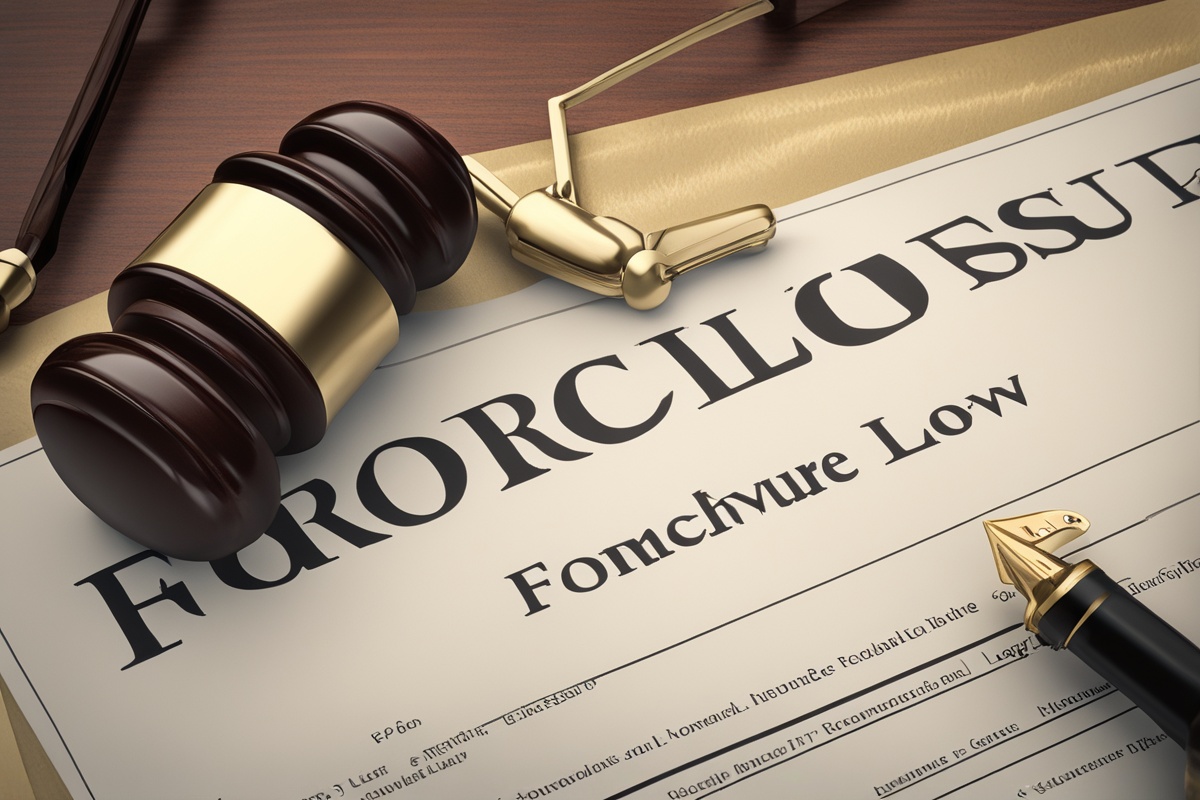Navigating the world of foreclosure can feel like walking through a legal minefield, especially if you’re a homeowner facing financial hardship. The term “foreclosure” often evokes fear and uncertainty, but understanding foreclosure basics can empower you to make informed decisions and explore viable legal options. Whether you’re at risk of losing your home or simply want to be prepared, this comprehensive guide will break down the foreclosure process, highlight actionable steps, and provide clarity on your rights. Let’s dive into what foreclosure means, the legal pathways available, and how you can protect your interests during this challenging time.
What Are Foreclosure Basics? A Simple Breakdown
At its core, foreclosure is a legal process where a lender attempts to recover the balance of a loan from a borrower who has stopped making payments by forcing the sale of the property used as collateral. This usually happens when a homeowner defaults on their mortgage. Understanding foreclosure basics starts with recognizing that this isn’t an overnight event—it’s a structured process governed by state and federal laws. According to the U.S. Department of Housing and Urban Development (HUD), foreclosure timelines and rules vary by state, but the general stages include missed payments, a notice of default, and eventually a public auction if the debt remains unpaid (HUD, 2021).
The emotional toll of foreclosure can be heavy, but knowing the basics gives you a fighting chance. For instance, most lenders don’t initiate foreclosure until you’ve missed several payments—typically three to six months. This window offers an opportunity to act, whether through negotiation or legal recourse. Let’s explore the key stages of foreclosure and what they mean for you as a homeowner.
Key Stages of the Foreclosure Process
The foreclosure process isn’t a single event but a series of steps, each with its own set of legal implications. While specifics differ by state, here’s a general overview of what to expect when facing foreclosure:
- Missed Payments: The process begins when you miss mortgage payments. Lenders often report late payments to credit bureaus after 30 days, impacting your credit score.
- Notice of Default (NOD): After 90 days of non-payment, many lenders issue an NOD, formally notifying you of the risk of foreclosure. This is a critical window to seek help.
- Pre-Foreclosure Period: This stage allows you to catch up on payments, negotiate a loan modification, or sell the property to avoid foreclosure.
- Auction or Sale: If no resolution is reached, the property may be sold at a public auction. In some states, you might still have a “right of redemption” to reclaim your home post-sale (Smith & Johnson, 2019).
Understanding these stages within the realm of foreclosure basics helps you identify where you stand and what options are available at each point. Timing is everything, so don’t wait until the auction notice to seek assistance.
Legal Options to Stop or Delay Foreclosure
If you’re grappling with the threat of losing your home, know that you’re not without options. Legal strategies can help delay or even prevent foreclosure, depending on your circumstances and state laws. Below are some of the most common legal avenues to explore when diving into foreclosure basics and homeowner rights:
- Loan Modification: Work with your lender to adjust the terms of your mortgage, such as lowering the interest rate or extending the repayment period. This can make payments more manageable.
- Forbearance Agreement: Request a temporary pause or reduction in payments due to financial hardship. This doesn’t erase the debt but buys you time to recover.
- Short Sale: If you owe more than your home is worth, a short sale allows you to sell the property for less than the mortgage balance with lender approval, avoiding foreclosure.
- Deed in Lieu of foreclosure: Voluntarily transfer ownership of the property to the lender to satisfy the debt, often with less damage to your credit than a full foreclosure.
- Bankruptcy Filing: Filing for Chapter 13 bankruptcy can halt foreclosure proceedings and allow you to reorganize your debts through a court-approved repayment plan (Brown, 2020).
Each of these options has pros and cons, and their success depends on your financial situation and lender cooperation. Consulting with a foreclosure attorney or HUD-approved housing counselor can provide personalized guidance on navigating foreclosure prevention strategies.
State-Specific Foreclosure Laws: Why Location Matters
One of the most critical aspects of foreclosure basics is understanding that foreclosure laws aren’t universal—they vary significantly by state. Some states follow a judicial foreclosure process, requiring lenders to go through the court system, which can take months or even years. Others use a non-judicial process, relying on a “power of sale” clause in the mortgage contract, which often moves much faster. For example, in Texas, non-judicial foreclosures can happen in as little as 60 days, while judicial foreclosures in New York may drag on for over a year (National Association of Realtors, 2022).
Your state’s laws also dictate whether you have a right of redemption—a period after the sale during which you can reclaim your property by paying the full debt plus fees. Knowing these nuances can shape your strategy for foreclosure defense. Check your state’s housing department website or consult a local attorney to understand the specific rules and timelines that apply to you.
Practical Tips for Homeowners Facing Foreclosure
While the legal landscape of foreclosure can be complex, there are practical steps you can take to protect yourself and potentially save your home. These tips are grounded in foreclosure basics and aim to help you act decisively during a stressful time. First and foremost, don’t ignore the problem—inaction often leads to worse outcomes. Here are some actionable ideas to consider:
Start by communicating with your lender as soon as you anticipate trouble making payments. Many lenders are willing to work with borrowers who show initiative, whether through a repayment plan or other solutions. Additionally, document everything—keep records of payments, correspondence with your lender, and any notices you receive. This paper trail can be invaluable if disputes arise or if you need to prove your efforts in court (Taylor, 2018).
Another key step is to seek free or low-cost assistance. HUD offers counseling services through approved agencies, which can help you understand your rights and negotiate with lenders. Lastly, be wary of foreclosure rescue scams. If a company promises to “save” your home for an upfront fee, it’s likely a red flag. Stick to reputable resources and legal professionals for help with foreclosure assistance.
Long-Term Impacts of Foreclosure and How to Mitigate Them
Even if you can’t avoid foreclosure, understanding its long-term effects can help you plan for recovery. A foreclosure can stay on your credit report for seven years, making it harder to secure loans, rent a home, or even land certain jobs. Studies show that credit scores can drop by 100–150 points or more after a foreclosure, depending on your prior credit history (Federal Reserve, 2021). However, the impact isn’t permanent, and there are ways to rebuild.
For starters, focus on rebuilding your credit by paying remaining bills on time and reducing other debts. Consider alternatives like a deed in lieu or short sale, which may have a less severe impact on your credit than a full foreclosure. Also, educate yourself on foreclosure recovery programs in your area—some states offer financial counseling or assistance for those who’ve lost homes. The road to recovery takes time, but with consistent effort, you can bounce back from the financial and emotional toll of foreclosure.
In conclusion, grasping foreclosure basics is the first step toward protecting your home and financial future. Whether you’re exploring loan modifications, filing for bankruptcy, or simply seeking to understand your state’s laws, knowledge is power in this process. Remember that you’re not alone—resources like HUD counselors, legal aid organizations, and even lender programs exist to help you navigate these turbulent waters. Take action early, stay informed about your rights, and don’t hesitate to seek professional advice tailored to your situation. Foreclosure may feel like the end, but with the right approach, it can be a challenging chapter rather than the final page of your story.
References
- Brown, A. (2020). Bankruptcy as a foreclosure defense: Legal implications for homeowners. Journal of real estate Law, 45(3), 112-125.
- Federal Reserve. (2021). The impact of foreclosure on consumer credit scores. Retrieved from https://www.federalreserve.gov/publications/foreclosure-impact.htm
- HUD. (2021). Foreclosure prevention resources for homeowners. U.S. Department of Housing and Urban Development. Retrieved from https://www.hud.gov/foreclosure
- National Association of Realtors. (2022). State-by-state foreclosure laws and timelines. Retrieved from https://www.nar.realtor/foreclosure-laws
- Smith, J., & Johnson, R. (2019). Understanding the right of redemption in foreclosure cases. American Real Estate Review, 38(2), 89-102.
- Taylor, L. (2018). Homeowner strategies for avoiding foreclosure: A practical guide. Real Estate Quarterly, 12(4), 55-67.





